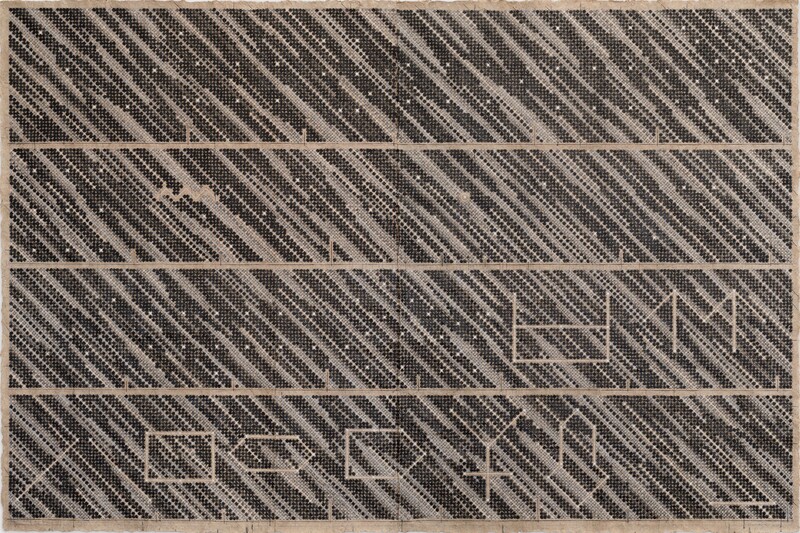DING YI 丁乙
b. 1962, works and lives in Shanghai

Current And Upcoming Exhibitions:
Ding Yi: The Winding Path,
Contemporary Gallery Kunming; The Yunnan University Wu Mayao Museum of Anthropology, Kunming,
07.26, 2025
- 11.09, 2025
Ding Yi: Constellations,
Galerie Karsten Greve, Paris, France,
09.13, 2025
- 12.15, 2025
Introduction
The practice of Ding Yi encompasses painting, sculpture, spatial installation and architecture. He works primarily with “+”and its variant “x” as formal visual signals, above and against the political and social allegories typical of painting in China. He chose this sign in the second half of the 80s as a synonym of structure, rationality and of a pictorial expressiveness that reflects the essence of things.Ding Yi has exhibited extensively at various institutions and galleries, among many others, The British Museum (London, 2021); M+ Museum (Hong Kong, 2021); Power Station of Art (Shanghai, 2020); San Francisco MoMA (2018-2019); Solomon R. Guggenheim Museum (New York/Bilbao, 2017-2018); Daimler Contemporary (Berlin, 2017); Centre Pompidou (Paris, 2015); Lehmbruck Museum (Duisburg, 2015); Museo Nazionale Delle Arti Del XXI Secolo MAXXI (Rome, 2011); Ullens Center for Contemporary Art (Beijing, 2007); Exhibition tour in museums in Bern, Hamburger, Barcelona, etc. (2005-2009); Hamburger Bahkhof Museum Für Gegenwart (Berlin, 2001). His works has also been included in 45thVenice Biennale (1993), The First Asia-Pacific Triennial of Contemporary Art (1993), 11th Biennale of Sydney (1998), Yokohama 2001 International Triennale of Contemporary Art (2001), 6th Shanghai Biennale (2006), 7th Shenzhen Sculpture Biennale (2012), 6th Busan Biennale (2016).
He has recent solo exhibitions at Château la Coste (France, 2024), Ningbo Art Museum & Ningbo Art Museum (Ningbo, 2023), TAG Art Museum (Qingdao, 2022), Jebum-gang Art Center (Lhasa, 2022), Galería RGR (Mexico City, 2022), ShanghART Gallery (Shanghai, 2018/ Singapore 2022), Timothy Taylor Gallery (New York, 2021/ London, 2019), Long Museum (Chongqing, 2020/ West Bund, Shanghai, 2015), Galerie Karsten Greve (Cologne, 2020/Paris&St.Moritz, 2021), Nova Contemporary (Bangkok, 2020), Galerie Rüdiger Schöttle (Munich, 2019), Guangdong Museum of Art (Guangzhou, 2018), Xi’an Art Museum (Xi’an, 2017), Hubei Museum of Art (Wuhan, 2016), Minsheng Art Museum (Shanghai, 2011), Museo d’Arte Modena di Bologna (Bologna, 2008), Ikon Gallery (Birmingham, 2005), etc.
His works are collected by numerous institutions, including The British Museum (London), Ashmolean Museum (Oxford), Leeum, Samsung Museum of Art(Seoul), Centre Pompidou (Paris), Daimler Art Collection (Berlin), UBS Art Collection (Zurich), Stichting Van Tuyckom Foundation (Brussels), Chinese Modern Art Foundation (Ghent), The City of Hamburg Germany, University of Sydney Art Collection, CDU Art Collection (Australia), Fukuoka Asian Art Museum, Morioka City Library, Sonje Museum of Contemporary Art (Gyeongju), Fosun Foundation (New York), M+Collection (Hong Kong), K11 Art Foundation (Hong Kong), Yuz Foundation (Jakarta), DSL Collection (Paris), The National Art Museum of China (Beijing), Taikang Collection (Beijing), Chengdu Museum of Contemporary Art, Hubei Museum of Art (Wuhan), Guangdong Museum of Art (Guangzhou), Long Museum (Shanghai), China Art Museum (former Shanghai Art Museum), etc.

